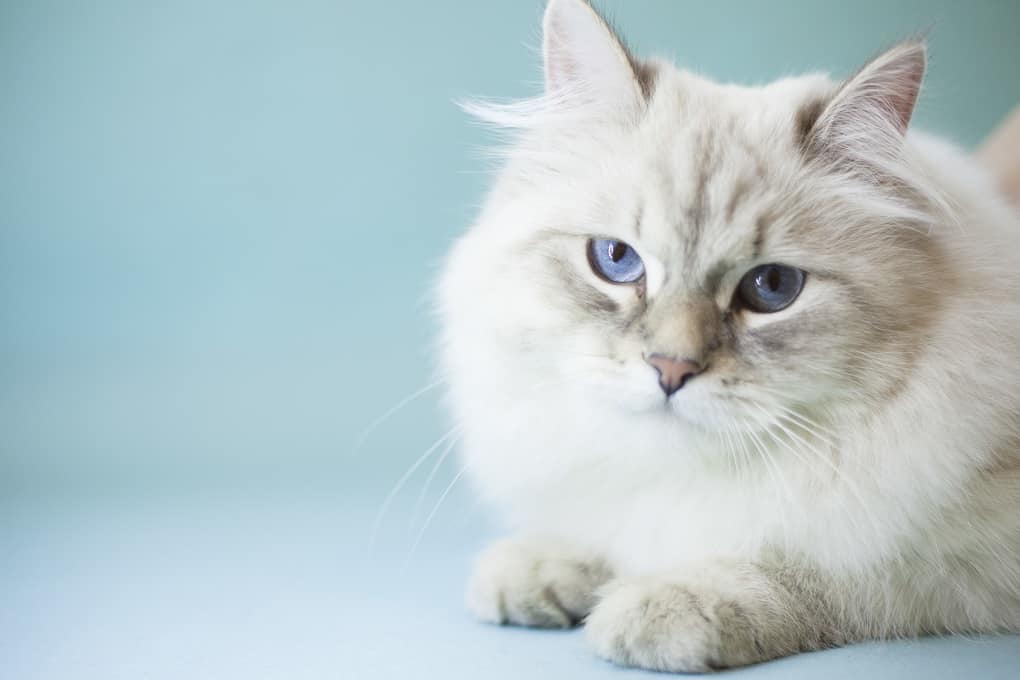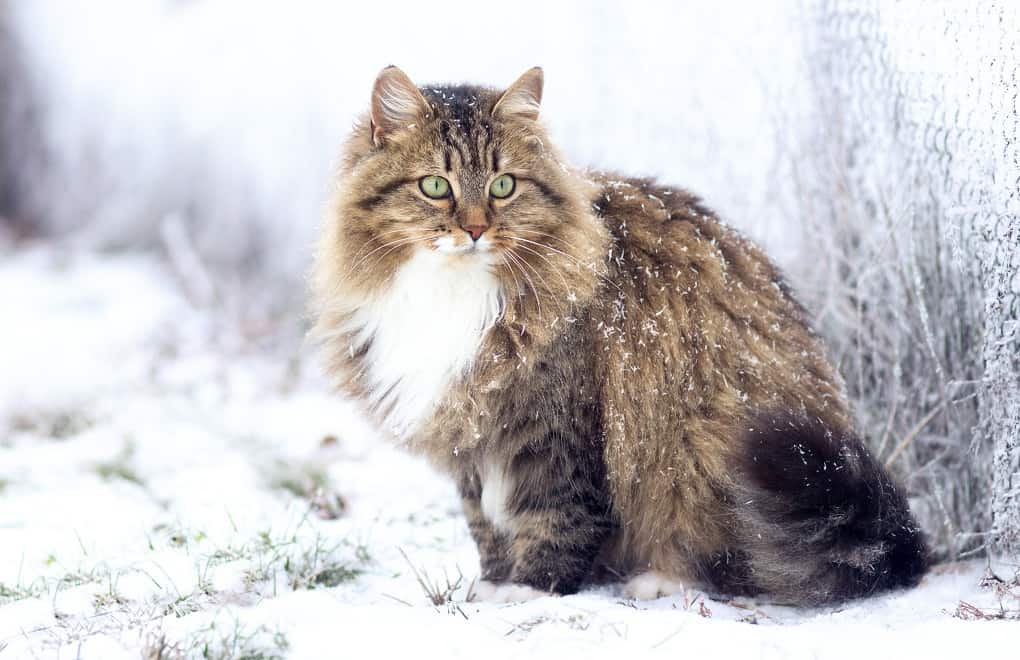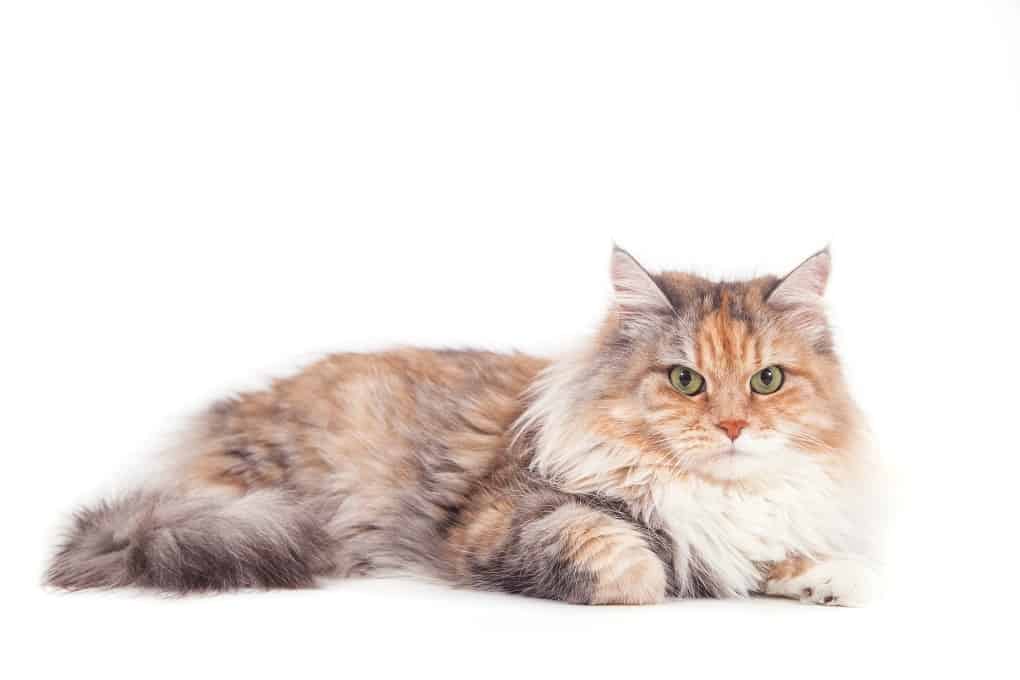Table of Contents

It’s not always easy to pick out the cat breed that is most suitable for you, but knowledge of your options can certainly help.
In this article, we’re going to discuss the majestic Siberian, from their origins to their care, temperament and what you’ll need to know about their health. That way, you can be armed with everything you’ll want to know about these fantastic cats.
What’s the nature of the breed?
Siberian cats are well known for their luxurious coats and magnificent size. Their thick coats are fantastic for protecting them against the harsh Siberian weather, and it’s something that cat lovers have come to adore.
These cats are also known to have mild temperaments. Spending time with their families and exploring are what they enjoy.
Origin and history of the breed
Cats have been living alongside humans for thousands of years. Even the ancient Egyptians knew that these creatures were good company, though they often kept cats that were much more sleek and adapted to a hot climate than the Siberian.
Since then, we have only become closer with our cats, no matter what breeds we have in our homes.
This video below will tell you more about Siberian cats:
As the name implies, Siberian cats come from Russia. Because they were often known for handling pest problems outside, their thick coats are great for warding off the cold.
This is a breed that has been around for 1,000 years, hunting down pray and enjoying plenty of human love.
Physical standards of the breed
Health and possible diseases
For the most part, Siberian cats are considered to be a relatively healthy breed. Like just about any other, there are some issues that they may be more likely to suffer from. However, the Siberian isn’t a breed that is known to have many health issues.
Due to their sturdy nature, there aren’t many other issues that this breed faces. However, it’s worth keeping in mind the added care needed for longhair cats, and the difficulty they may have in weather that is particularly hot.
Siberians can be more prone to hypertrophic cardiomyopathy than other breeds. This is one of the most common heart issues cats in general can experience.
Consequently, any Siberian should be checked for this illness. Keeping their weight at a healthy level is also a great way to help with preventing this illness from developing.
Grooming
Siberian cats are known for having a gloriously full, bushy coat. What makes it even better is that this coat doesn’t tend to tangle or mat the way the fur of other longhair breeds might.
However, keep in mind that fall and spring can cause changes in their coat that cause them to require more attention. When their fur falls out more quickly, it can create a higher risk of tangling so brushing them more often is a great idea.
Otherwise, a weekly brushing is usually enough.
Height and size
Siberian cats tend to stand at around 13 inches tall. This is larger than the majority of domestic short or longhair cats, but shorter than Savannah cats, Maine coons and Chausies.
Typically, the Siberian can be thought of as the largest cat breed, only sometimes being rivaled by the Maine Coon, which bears a similar appearance. They are also known to be sturdy cats with a stocky build, making them a favorite among many big cat lovers.
Weight
Depending on the gender, Siberian cats can get decently large. Males can end up weighing in at anywhere from 15 to 20 pounds. Meanwhile, females tend to be a bit smaller, ranging from 10 to 15 pounds.
Activeness
This breed is known to be quite active and quite intelligent, so you’ll want to make sure your cat is safe for their adventures. Offering them a quality cat tree with plenty to keep them entertained is a great idea.
Hypoallergenic
Siberian cats are not known to be hypoallergenic, but you can help to limit allergies through the use of efficient cleaning, regular baths and brushing.
You may even find that a Siberian won’t put up as much of a struggle with baths as other cats might.
Lifespan
Like most cats, the lifespan of a Siberian can range anywhere from 10 to18 years. This can really depend largely on their lifestyle.
As can be expected, cats which live indoors and receive regular vet trips tend to be healthier than those who do not. Keeping them active to avoid extra weight can also play a large role.
Caring Difficulty
While Siberians aren’t terribly difficult to care for, you will want to make sure there is plenty around to keep them entertained.
They need to be able to be active without causing trouble, and providing regular brushing will allow them to continue looking and feeling great.
Where to get a Siberian Cat
For the sake of providing homes to cats in need, it’s worth checking your local shelters for Siberians or Siberian mixes before anything else.
If you do end up going with a breeder, make sure it is a reputable breeder who ensures that kittens are healthy, well socialized and happily cared for.
How much does a Siberian Cat cost?
In shelters, cats can be adopted with shots and initial checkups complete for $100 or less, depending on the area. Be prepared to pay a decent amount more if you’re going with a breeder, as these cats can cost upwards of $1000.
Choosing the right type of Siberian Cat

For the most part, choosing the right cat of any breed should rely on their personality. It’s worth getting to know them before choosing the cat you want to adopt. Often, you may find that the right cat is the one who chooses you!
Responsibilities to consider in the care of a Siberian Cat
What do they require?
Siberian cats will need plenty of cat toys and space to roam, or at least a cat tree large enough to handle them! Aside from that, you’ll want to make sure the basics are covered, like quality food, fresh water, a litter box or two and regular nail trims and brushing.
Do they need a certain level of care and attention?
Because they are active and intelligent, it’s going to be a good idea to make sure they at least have plenty to keep themselves entertained. Spending some time every day playing with them is also a good idea.
Keep in mind that these aren’t Savannah cats, so they may not need quite that level of exercise, but they aren’t couch cats either. At least not all the time.
Characteristics of Siberian Cats
Behavior
Siberian cats tend to be quite welcoming and laid back when it comes to the various creatures of the home. They love to adventure, and would enjoy a tall cat tree that allows them to watch over everything.
Furthermore, this isn’t an incredibly needy breed so they are usually fine with entertaining themselves. This is a good breed if you’re looking for a cat you can teach tricks to.
Pattern
Siberians can come in a range of colors and patterns from orange and white tabby, to solid gray and even patterns that are reminiscent of a Siamese cat. Because of that, you’ll likely be able to find a cat with a unique look that suits you.
Affectionate
Siberians are friendly cats, but they are great at keeping the balance. While enjoying their families, they aren’t typically very needy. In addition, these cats may be likely to follow you from room to room in order to see what you’re doing.
Dog/child-friendly
For the most part, this breed has no problems with other cats, dogs or children. However, the way each individual cat is raised can play a large part in how they behave around various people and animals.
Make sure that the Siberian you choose is well socialized and treated well by others in the home, and you’re unlikely to experience any problems.
Intelligence
Siberian cats are great options for those who are looking for a cat that would enjoy learning tricks and playing with puzzle toys.
Energy
Siberian cats are great options for those who are looking for a cat that would enjoy learning tricks and playing with puzzle toys.
Maintenance
For the most part, a good brushing once a week, quality cat food, exercise and regular checkups for cats at the vet are what you’ll need to keep this cat healthy. They aren’t a terribly high-maintenance breed but they do need a bit of care, especially in shedding seasons.
Types of Siberian Cat

While there aren’t exactly different types of Siberian cats, you can find some different color and pattern options out there.
Siberian cats come in just about all the colors you’d find in other breeds, save for an exclusively all black coloring. There are gray, white, blues and smoky blacks. In addition, there are many different tabby colors like gray, tortoiseshell, red, orange, golden and more.
You’ll be able to find Siberians in solid colors, tabby and classic. In most instances, you’ll notice at least some amount of tabby striping, but it may be more or less noticeable depending on the colors that show in the cat’s fur.
Siberian Cat compared to other Breeds
When compared to other breeds, Siberians tend to be a bit larger. They are also going to require brushing more often than their shorthair siblings. Aside from that, you’ll find that they are quite balanced and enjoy affection and space quite equally.
Conclusion
Overall, the Siberian is a breed that often looks more high-maintenance than it is, which makes for a fantastic feature in a pet. Siberians are gorgeous, hardy and intelligent cats who love to explore the world around them. As long as you don’t mind providing some regular brushing, the Siberian is a great cat to have around the house.